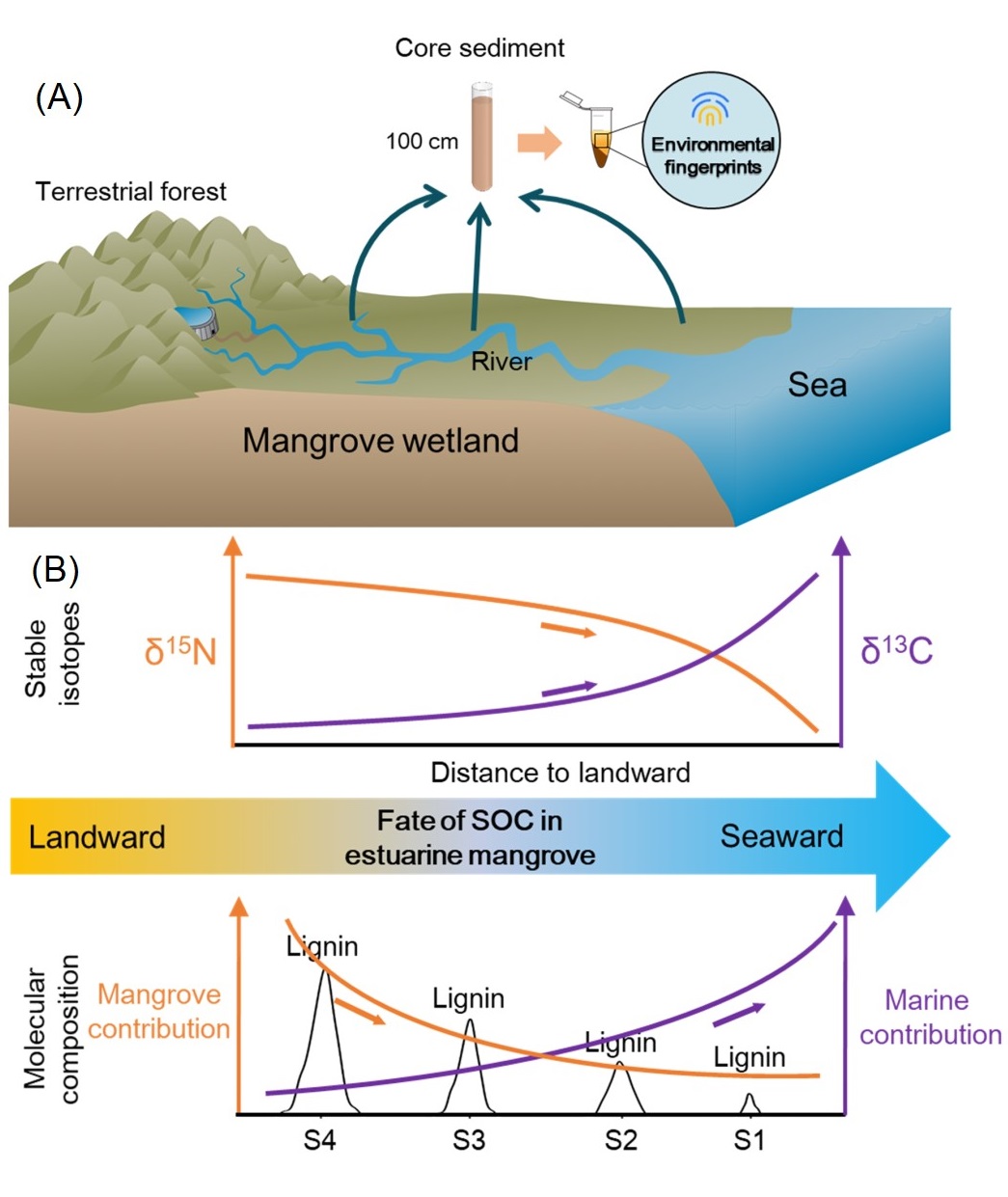Xiaoliang Research Station Reveals the Fate of Soil Organic Carbon in Subtropical Estuarine Mangroves
Mangroves are crucial coastal "blue carbon" ecosystems with significant carbon sequestration potential, making them highly influential in the global carbon cycle. In recent years, the sources and burial characteristics of organic carbon in mangrove wetland sediments have garnered widespread research interest. However, studies specifically focusing on estuarine mangrove wetlands remain limited, particularly regarding the sources of sedimentary organic carbon and its biogeochemical cycling processes.
A research group from the South China Botanical Garden, Chinese Academy of Sciences, conducted field experiments at the Qi’ao Mangrove Nature Reserve in Zhuhai to address this critical question. By analyzing total organic carbon (TOC), total nitrogen (TN), stable carbon and nitrogen isotopes (δ13C and δ15N), and plant-derived biomarkers (lignin phenols) in soil across different tidal zones, the team was able to distinguish the sources of soil organic carbon. Combining the C/N ratio with lignin phenol biomarkers has proven to be an effective method for revealing the origins of organic carbon. The study employed a three-end-member Bayesian mixing model based on C/N ratios and δ13C values, which indicated that the primary source of organic carbon in the nearshore mangrove communities is in situ plant contributions (62%), followed by terrestrial (27%) and marine (11%) sources. As the distance from the coastline increases, the soil organic carbon in coastal mangrove communities shifts to being primarily derived from terrestrial (43%) and marine (35%) sources. Tidal elevation and vegetation type were identified as key factors influencing the sources of soil organic carbon.
This study not only deepens our understanding of the sources and dynamics of organic carbon in mangrove wetlands but also provides valuable scientific evidence for future monitoring of blue carbon balances and wetland management. The researchers emphasize the need to strengthen coastal vegetation protection and management to ensure that these ecosystems can continue to function as efficient carbon sinks.
The research results, titled "Fate of soil organic carbon in estuarine mangroves: Evidences from stable isotopes and lignin biomarkers," have been published in the international soil science journal CATENA. https://doi.org/10.1016/j.catena.2024.108401. Dr. Guoming Qin, a postdoctoral fellow at the South China Botanical Garden, is the first author of the paper, while the corresponding author is Professor Faming Wang, the research group leader.
Corresponding author: Dr. Faming Wang is a scientific researcher at the South China Botanic Garden (CAS). His research employs controlled experiments, data assimilation, and large-scale model simulations to systematically investigate the impacts of global change on carbon cycling processes and carbon sink patterns in coastal forests and wetlands. His work spans multiple scales, including plant individuals, ecosystems, regional, and global levels. Emails: wangfm@scbg.ac.cn. Tel: :+86-2037252905

Fig A) Sampling diagram. Soil cores (0–100 cm) were collected at different tidal elevations from nearshore to seaward zones. "Environmental fingerprinting techniques" were used to analyze the origins and biogeochemical processes of the samples. B) Graphical abstract. As distance from the coast increases, δ15N values decrease and δ13C values rise. Nearshore soils are mainly influenced by plant-derived carbon, while offshore soils are dominated by marine and terrestrial sources.
File Download: